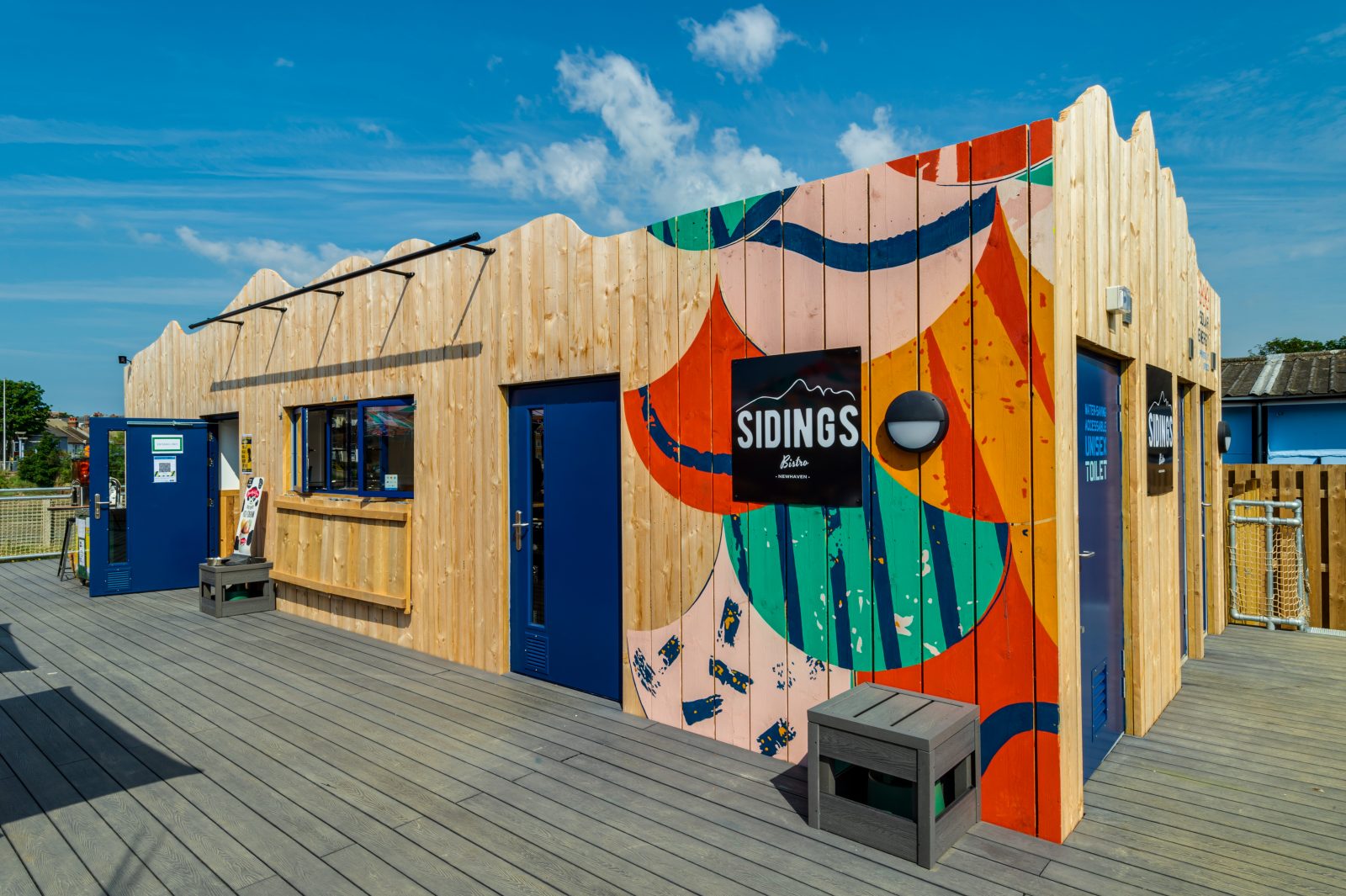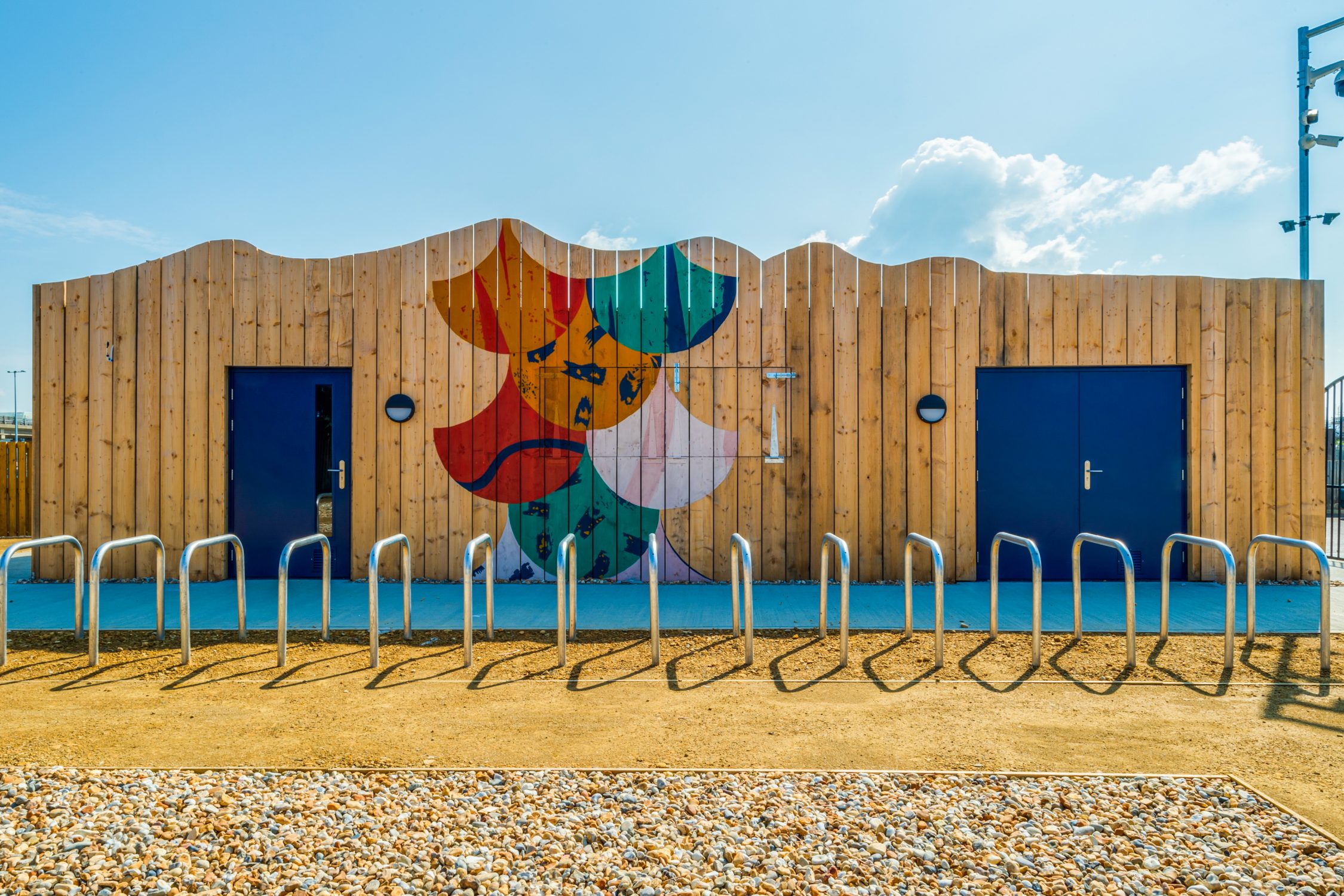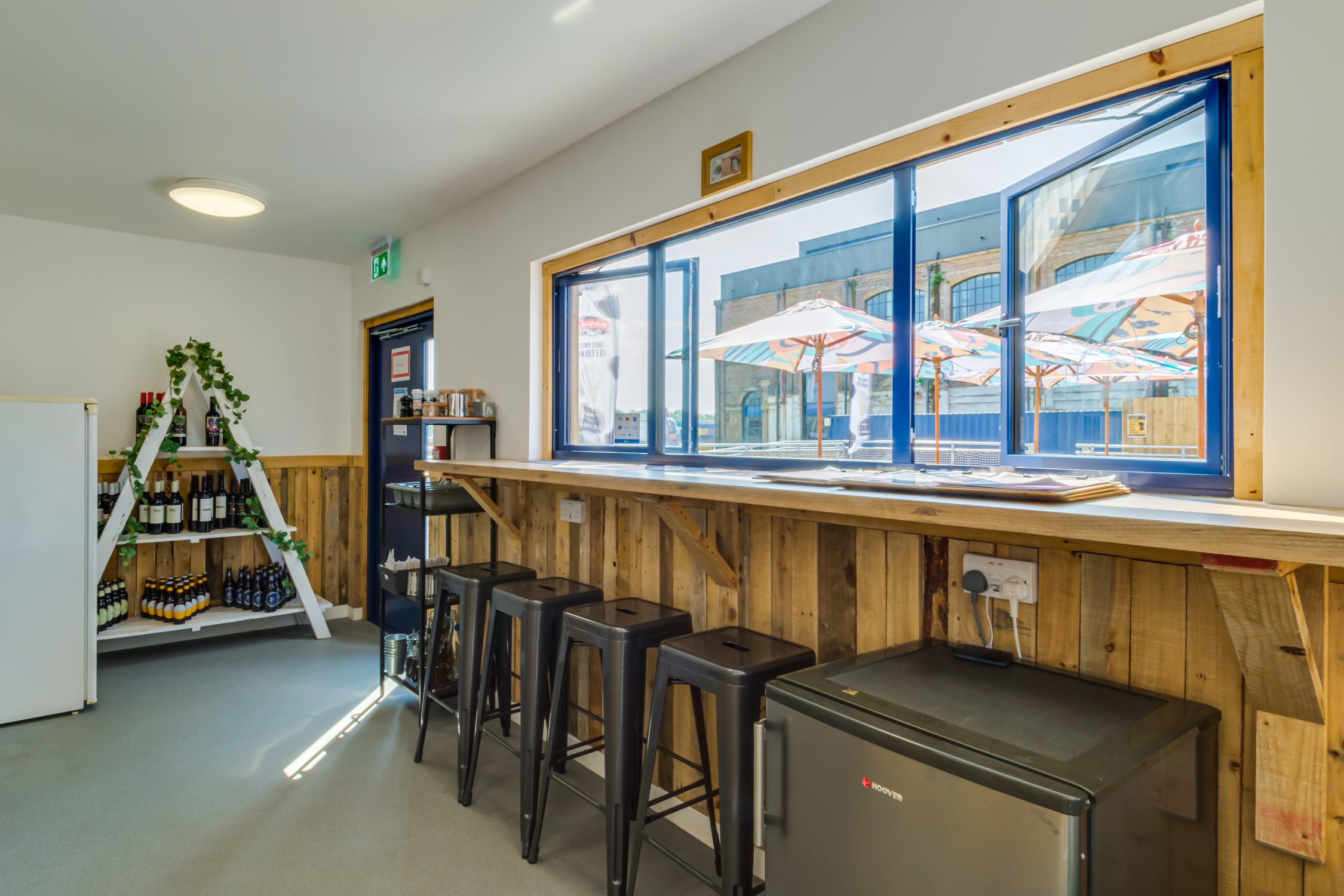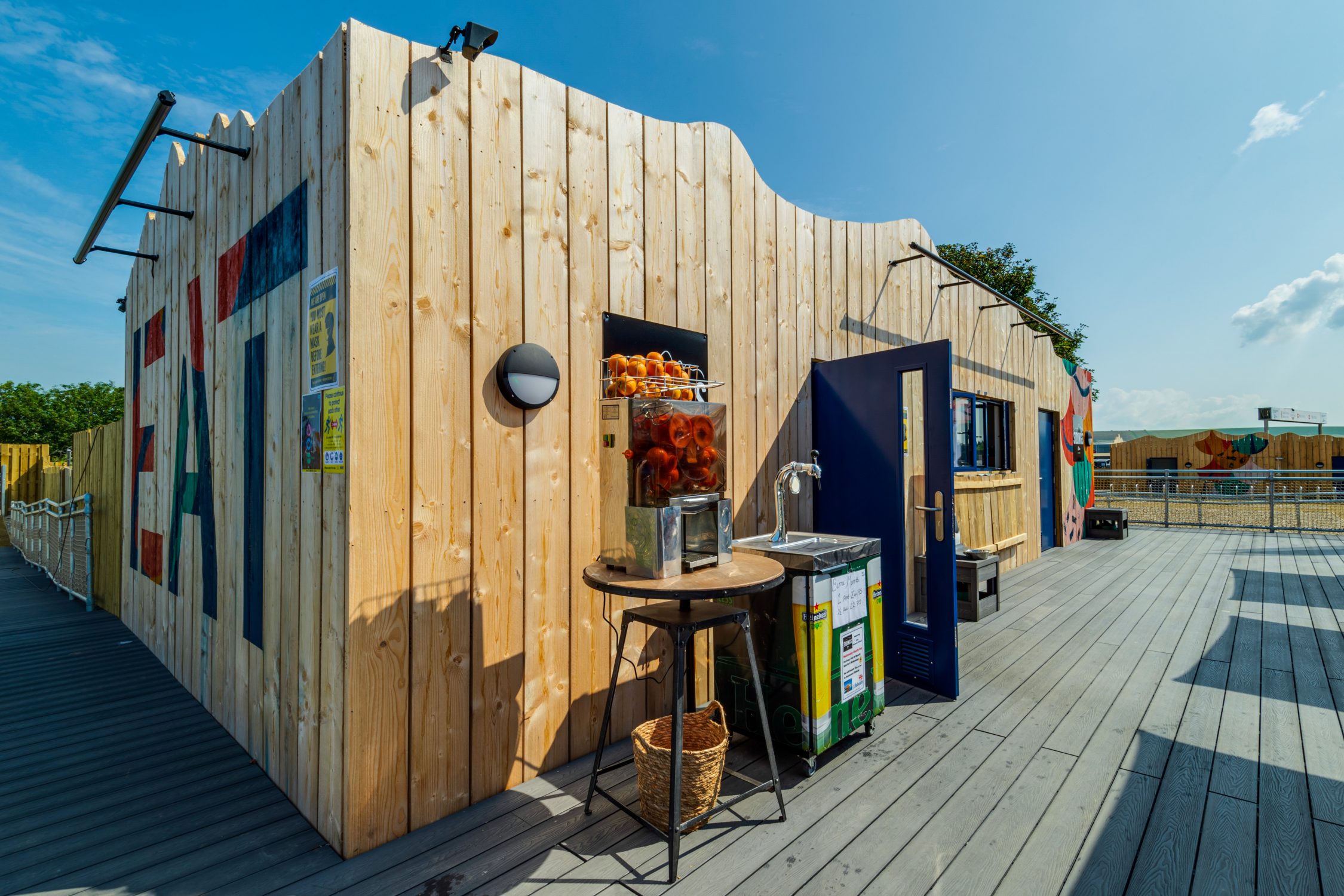SERVICES PROVIDED
Stickland Wright, due to our technical expertise, often help deliver projects which have first been designed by others. In this instance the design concept for The Sidings ‘meanwhile use’ had already been granted planning consent. Stickland Wright helped to amend the proposals to suit future occupiers and facilitate the build teams requirements, bringing the project to life.
Our SW+ service detailed the modular solution with shipping containers adopted to suit the requirement for ‘meanwhile use’. We have good experience of these and were able to embrace the numerous stake holder inputs, including those of build team, local authority client and occupiers. We were also required to work within the numerous constraints of this coastal estuary location.
In consideration of the low energy design initiatives here, the main principle is of circularity. The proposal was always intended to be a ‘meanwhile use’ of the land with all buildings capable of being dis-assembled and the site left clean for new use. The shipping containers could be removed and re-purposed for different locations.





